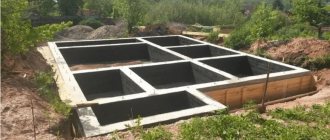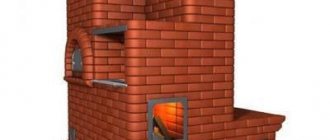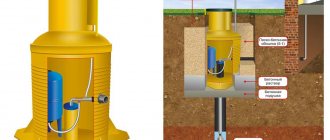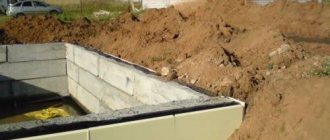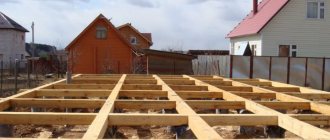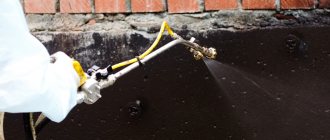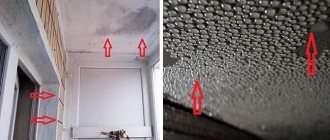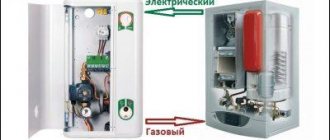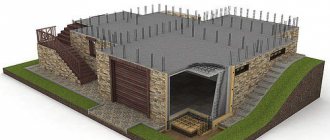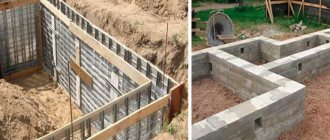Any stove, if used incorrectly, poses a fire hazard, so it is important to promptly service the system and comply with all operating requirements. Most often, people wonder how to clean a chimney pipe from soot in a private house. A clogged lumen impairs draft, which leads to problems with heating and a burning smell in the room.
Why do blockages occur?
The main factor in the formation of plugs in chimneys is emissions from burning wood. Typically, pipes become clogged with soot, tar and carbon monoxide. To reduce the amount of combustion by-products, you need to take a responsible approach to the selection of firewood and know about its characteristics.
Thus, coniferous trees produce a larger amount of resins, but produce less heat. Therefore, they are of little use for space heating. The resin, when released from the firewood, settles on the inner walls of the stove, to which a layer of soot adheres on top.
Also an excellent dirt collector is condensation formed when using undried firewood. It is worth noting that many owners burn household waste in stoves, the waste from which also reduces the clearance in the pipe.
There are also other ways of clogging. For example, in the fall, tree leaves and other debris often get inside. In addition, a layer of soot sometimes flakes off and falls down, blocking the passage.
Why does the chimney become clogged?
Combustion is a complex physical and chemical process during which a rapid oxidation reaction of combustible substances occurs, releasing a large amount of heat. The initial substance that served as fuel breaks down into fractions as a result of combustion. Most of it turns into a hot gaseous state and rushes down the chimney, creating draft. Along with the gases, particles of unburned substances rush into the chimney, which are deposited in the form of soot and plaque.
Incomplete combustion occurs for two reasons:
- not all substances are flammable;
- due to lack of oxygen, without which combustion is impossible.
Soot is carbon in an amorphous state. In the chimney, soot mixes with the oils and resins contained in the wood and becomes greasy to the touch. This mixture itself is flammable. When soot ignites, its flame reaches a temperature of over 1000°C. This reason alone is enough to regularly clean the entire chimney duct.
There is only one step from a fire in a chimney to a fire in a house.
In addition, soot clogs the clearance, which reduces traction. For this reason, combustion deteriorates and heat generation in the furnace decreases. Even worse, a narrow clearance can create a reverse draft effect when the products of incomplete combustion begin to escape into the heated room. This is fraught not only with a fire, but also with the danger of carbon monoxide poisoning.
The first signs that the chimney requires cleaning appear long before obvious negative consequences. You should be wary if:
- the color of the smoke from the chimney changes from transparent or whitish to dark;
- it was noticed that instead of a clean fire with a cheerful crackling of coals, dark flames appear with smoke from the firebox;
- people with developed hearing will feel a change in the tone of the humming in the chimney.
Often, the chimney design includes inspection windows with plugs; they are called inspection windows; through them you can check the condition of the chimney. In the absence of revisions, the old-fashioned method will do: lowering the brick on a rope into the chimney. If the blockage is severe, the brick will begin to get stuck. By the way the rope loosens and jerks again, you can feel the condition of the chimney. Today's advanced homeowners use a video camera on a flexible cable.
A clogged chimney is a risk factor and a threat to fire safety. This stove cannot be used until the chimney is completely cleaned.
Damage from a clogged chimney
A dirty chimney not only impairs draft and complicates kindling. It can be fraught with many dangers that cause harm to health and property. The main threats are:
- Due to poor breathability, smoke returns into the room, which can cause carbon monoxide poisoning.
- A clogged passage quickly collects combustion products on its walls, and poor draft promotes the formation of condensation, which leads to even faster clogging.
- The soot layer is considered excellent thermal insulation and prevents the main elements of the stove from warming up, which significantly reduces heating efficiency.
- Plaque often ignites when heated, which can lead to a fire and rapid burning of pipe walls. Sparks flying out pose a threat to neighboring buildings.
All these situations cause a lot of trouble for the user. That is why you need to be responsible when servicing chimneys.
Who should clean the chimney pipe?
The profession of a chimney sweep has existed for quite a long time; along with other specialties, it is still relevant today. Specialists have modern devices for faster cleaning work and know how to clean a chimney more practically than doing it yourself.
In a private house
Fires associated with chimneys and stoves have become somewhat more frequent, and people have begun to take prevention much more seriously; there are entire teams of specially trained people working in private firms.
The whole process can be done independently, but this work can hardly be called dust-free; in some situations you will need special equipment, such professionals always have it.
Because of such moments, most owners trust companies for which cleaning the chimney to remove combustion products will not be difficult.
In an apartment building
Periodic inspections of such buildings are often carried out by public utilities, but since the chimney sweep profession was on the verge of extinction, government agencies also resort to private organizations.
Although modern models are quite practical and have been thought out for many years, undergone improvements and reconstruction, they also need to be cleaned periodically. This service is expensive, but the result can be seen almost immediately after the specialists complete the task.
It’s quite easy to find such people; after fires associated with blockages became more frequent, many professional private firms appeared, and similar advertisements can be found in any city.
When to Clean
It is not always possible to quickly clear a heavily clogged channel. Often, for these purposes, it is necessary to hire specialists who will perform all this work efficiently, carefully and accurately. So that you do not have to replace the pipes with new ones, it is recommended to regularly inspect the entire system and carry out timely preventive maintenance.
It is imperative to check the channel when installing new equipment or at the beginning of a cold period. The stove must be inspected at least 2 times a year. After several years of operation, the inspection can be carried out once.
Brick systems clog more often, so they are checked 3 times: before the onset of cold weather, during and after it. If the heating unit is used constantly, then it must be checked at least once every 2 months.
Ferrum stainless steel chimneys prevent the accumulation of soot due to the smoothness of the internal surface and the smoothness of the joints of the bell system. Caring for it will be much easier and will cost much less.
Cleaning Frequency
For preventive purposes, experts strongly recommend inspecting and visually inspecting stoves, solid fuel boilers, fireplaces and chimney ducts.
Schedule of planned audits:
- any heating equipment - after initial installation in a residential area, immediately before start-up, after completion of repair work;
- seasonal operation systems - before the start and at the end of intensive operation;
- gas boilers and stoves - twice a year in the first 2 years after installation/laying, then once annually;
- brick chimneys - quarterly;
- chimneys made of any other materials - every 12 months;
- outlet pipes of heating and heating-cooking furnaces - three times per season.
If problems are identified during the inspection, they must be corrected immediately. Then the system will function correctly and provide the proper level of comfort and fire safety in residential premises.
Cleaning the chimney is mandatory as soon as possible, if it has lost its capacity and becomes clogged, combustion products do not escape into the atmosphere, but return to the living rooms
You can organize cleaning activities yourself or use the services of a chimney sweep. The main thing is to correct all problems in a timely manner and ensure that the equipment can operate in normal mode.
Tool for the job
In order to clean the roof, a special device is used, consisting of a long rope with a brush attached to it. To make it more convenient to work with such a device, a weight is attached to the end that will pull the brush down. In addition, the weight helps to break through a strong blockage if you hit it from above several times.
The shape of the brush should be selected depending on the type of pipe. It is strictly forbidden to use metal pile on stainless steel walls.
Cleaning from the roof
Cleaning with a brush is performed by a professional in several stages:
- Before starting work, all doors in the furnace are closed so that soot does not stain the room. For greater effectiveness, you can cover them with a wet cloth. Specialists wear safety glasses to prevent waste from getting into their eyes, and they also attach a safety rope, which eliminates the possibility of injury in the event of a fall.
- The first step is to remove the pipe head and inspect the channel.
- After this, the chimney sweep is carried out with a load without a brush along the entire length to chip off the layers.
- Then a brush is put on the instrument and the walls are thoroughly cleaned with forward movements to the entire depth of the canal.
- During operation, the inspection hatches are opened several times and the space is cleared of accumulated soot.
This is a very effective cleaning method that has been used for many centuries. However, this method has a serious drawback: the brush does not pass through areas where the channel is turned at a right angle.
Checking the quality of cleaning
The easiest way to check is to shine a flashlight into the chimney. If you don’t find any gray, brown or black deposits on its walls, it means the cleaning was done efficiently. The absence of an unpleasant odor while burning wood also indicates that there are no harmful substances left in the chimney. During cleaning, foreign objects may enter the chimney (for example, a piece of rope, fibers from a brush and other consumables). Before lighting the wood and making the first check, carefully ensure that the chimney is free of foreign debris.
If you suspect that the chimney was damaged during cleaning, do not use it under any circumstances until a preliminary inspection. Carry out a thorough check yourself or invite a specialist.
Remember - if diagnostics or cleaning were carried out incorrectly, it is not recommended to use such a chimney in the near future.
Indoor cleaning
How to clean a chimney in a stove from soot in hard-to-reach places in the channel? If the stove has the correct design, it has special hatches through which you can easily clean all sections of the pipe. To do this, use a brush on a rigid bending rod.
For small sections, use a cleaning brush, sold in specialty stores. They are also suitable for cleaning drains and ventilation systems.
For greater cleaning depth, special prefabricated rods made from several parts are used. They are usually attached to each other using threads and have a length of 1 m.
The higher your budget, the more professional equipment you can order. For example, a professional flexible rod wound on a special drum, along its entire length there are indicators that allow you to control the depth of the brush.
After completing the work, it is recommended to wait about half an hour for the plaque to settle, and then clean all hatches. At the end of the procedure, the pipe head must be closed.
Features of mechanical cleaning
Mechanical cleaning of chimney channels is another effective method of removing accumulated soot, soot and tar deposits that reduce the quality of the heating system.
This is done in two ways:
- top;
- lower
Cleaning from above through the roof is carried out only in normal weather conditions and without wind. Requires experience, physical training and compliance with personal safety measures.
The master does all the work while standing on the roof of a residential building. With this option, dirt does not enter the living quarters, but is removed outside using special devices.
Typically, top cleaning is carried out on fine, dry days in the fall before the start of the heating season and in the spring after the end of constant use of the stove or fireplace. This helps keep the chimney in good condition.
Bottom cleaning is carried out through the outlet of the firebox. The operation is safe and does not require being on the roof, but after it a lot of dirt and combustion residues remain in the rooms.
Most often, the lower method is used in winter, when the chimney duct needs to be cleaned, but objective weather conditions do not allow this to be done through the roof.
The main machining tool is a wide brush for round pipes or a stiff brush for square ones.
The work is labor-intensive and requires a certain skill. Many owners prefer not to do it themselves, but entrust it to a professional chimney sweep.
Additional information on cleaning a smoke duct with your own hands is presented in this article.
Chemical methods
Traditional methods of cleaning chimneys are effective, but it is a very labor-intensive process that takes a lot of time. If you are thinking about how to clean the chimney in a stove at home without unnecessary hassle, then specialists who use substances that break down soot will come to your aid. However, even they are not always able to cope with severe contamination, so preventive cleaning is necessary.
The products have different compositions, but they are all aimed at detaching carbon deposits from the walls and making it difficult for new plaque to appear. Let's look at the most common methods.
Smoke
Available in several versions:
- Cardboard box - set on fire in the firebox. The preparation contains special substances that dissolve combustion products adhering to the pipe. After which the soot falls or goes away along with the smoke. After the box burns out, the effect will persist for a long time.
- Wooden burning "Smoke" - is burned in the stove and also cleans the chimney. At the same time, the components contained in the product produce a beautiful flame that looks impressive in the fireplace.
- Cleaner for pallet stoves - perfectly cleans boilers and stoves of this type. It can also be used for wood-burning fireplaces. The product can be used once every 2 months, strictly following the instructions.
HANSA
This is a series of high-tech products from a German manufacturer. They are aimed at dissolving creosote, which is a binding material for combustion products. The soot layer crumbles and burns entirely in the firebox.
Similar products are produced in Russia under the name “Chimney Sweep”. It also comes in a variety of forms and can be used for both cleaning and preventing contamination. The great advantage of such products is the ability to use them in chimneys of the most complex design; they do an excellent job of cleaning stone pipes that have an uneven and porous surface.
Kominichek
This product is produced in the Czech Republic and is very popular in our country. It is packaged in small bags, which are burned along with firewood. Thanks to the presence of special substances, soot is converted into a substance that quickly burns when the furnace heats up. It should be noted that this composition is not effective in case of heavy contamination, and during combustion it releases toxic substances, so it is necessary to tightly close the firebox when using it.
Other chemical cleaning products are also commercially available. It is recommended to try different options and choose the best one for yourself.
How to make DIY cleaning devices
Special devices for cleaning chimneys from soot are sold in a regular hardware supermarket or specialty store, or you can make them yourself.
Let's compare a metal brush with a plastic one. Let's start with the fact that a metal brush, of course, will retain its working shape longer, but with particularly intensive cleaning it can scratch the chimney from the inside. Modern plastic cleaners are soft and scratch the chimney much less, although they do not last long and easily break, losing their working shape. That’s why there is an unspoken rule among summer residents: for a brick chimney, take a metal chimney brush, and for a metal one, use a plastic one. Basically these are the following devices:
Plastic brush: short-lived, but gentle on the chimney
Making a plastic brush is as easy as shelling pears:
If you are going to build such a brush for cleaning the chimney, then the whole job will take you no more than 15 minutes.
So, a regular chimney brush is a strong base with a brush threaded through a metal wire with a weight on a chain. In addition to all this, you will need a rope along which the brush will need to be lowered into the chimney. Instead of a weight and rope, it is quite enough to use a special holder. At least then the brush won’t get stuck in the chimney and you won’t have to pull it out later.
Plastic bottle brush: no cost
Moreover, you can even make a homemade brush from an ordinary plastic bottle (at least several). Just 2-3 of these brushes will be enough for one season. So, here's how to make such a bottle brush:
- Step 1. Make round holes in the center of the lid.
- Step 2. Cut the walls of the bottles into strips lengthwise, approximately 1.5 or 2 centimeters wide.
- Step 3. Make a hole in the bottom of the bottle using a heated nail and thread a 5 mm thick wire through it.
- Step 4. Now simply insert one bottle into the other through the cut strips and attach a thick wire to one end.
- Step 5. Place two plastic bottles, press and secure them so that it is convenient to tie them with plastic wire.
- Step 6. Spread the cut strips of plastic evenly in a circle and secure the steel cable as finished.
We recommend: Heating a garage: the most economical way of all options
The only difficulty in making this is to make sure that the load and rope (cable) are exactly in the center, and the brush does not warp during use.
Hard round brush: using scrap materials
Another great option is to make such a brush from a disc brush for an angle grinder. This brush is much stronger than previous options and can handle even the most soot. It is only important that the diameter of the brush is equal to the diameter of the chimney, because its bristles are stiff and do not bend well:
To such a brush you need to hang a weight of about 5 kg on a steel cable, behind which you will pull the brush along the chimney. Just in case, attach another rope to the load, which will help another person from inside the room pull out the stuck brush. It is important that the load is at least a third less than the chimney, otherwise it will get caught and you will have to tinker.
You need to clean the chimney with such homemade devices as follows:
- Step 1. Climb onto the roof, remove the damper from the chimney and lower the brush into the chimney all the way to the end.
- Step 2. Now start pulling the brush back.
- Step 3: Lower the brush down again and pull it out again.
- Step 4. All this needs to be done within a few minutes, keep in mind that below, inside the room, soot will fall abundantly and this must also be removed.
As you can see, everything is simple!
Asymmetrical wire brush: for difficult sections of the chimney
If your chimney does not have a large length, elbows, bends and does not become very clogged (for example, we are talking about a chimney in a seasonal bathhouse), then the following simple devices are suitable for one-time cleaning:
Telescopic brush: for working indoors
Usually, flexible meter-long sticks that twist into each other and are also called telescopic, otherwise prefabricated, work well as a gesture. Working with it is quite simple:
- Step 1. Screw the brush onto the first handle, push it straight through the heating device, push it through and clean it for one meter.
- Step 2. The next step is to screw the second one to the end of the handle that you are still holding and which sticks out of the chimney and thus push the brush another meter up the chimney.
- Step 4: Repeat this entire process until you have completely cleaned the entire chimney.
See how simple everything turns out to be in practice:
A telescopic brush can penetrate very deeply into the chimney pipe:
This brush costs significantly more than the previous option, but the advantage is that such sticks usually do not break and last quite a long time. In addition, with such a rigid handle it is easier to push through the blockage in the chimney. In addition, using this method is quite difficult to clear soot from the bends of the chimney.
As for choosing the size of the brush, everything is simple here: you need to select one according to the diameter of the chimney, preferably equal to it or 12 cm larger, so that the brush can easily catch on and not slide along the walls, slightly missing them:
Let's summarize: no matter what device you use to clean the chimney yourself, the main thing is to do this cleaning regularly. This is a clear method. Plus they are sold in any specialized store. And you don’t need to call a specialist. The main thing is to do everything on time and monitor the condition of the stove, and do not neglect cleaning the chimney.
Folk remedies
It should be noted that chemical methods are not new. For a long time, folk remedies have been used for cleaning, which also cope well with pollution.
The easiest way is ordinary table salt, which is sold in any grocery store. Its vapors destroy the structure of sooty growths. All you need to do is sprinkle some of the product on the wood and set it on fire. This method is effective for prevention, but it is ineffective for large growths.
Naphthalene has the same effect, one tablet of which is quite enough for preventive work. However, this method is rarely used due to the formation of an unpleasant odor when burning naphthalene.
You can pour several liters of boiling water into the pipe before lighting. This will soften the soot, which will fall and burn when heated.
Our ancestors also used potatoes to get rid of soot accumulation by simply throwing them into a hot oven. Starch softens the plaque, which will simplify further cleaning if it does not fall off on its own.
For a long time, people have been using a mixture of copper sulfate, burnt coal and saltpeter for dry cleaning. Typically, for these purposes, components are taken in a ratio of 5x2x7.
The mixture consumption is small. Approximately 5 kg of firewood requires 1 kg of product, which is poured into a hot firebox. This composition is toxic, so you need to close the stove door tightly.
It is effective to use alder or aspen firewood for such purposes. The emissions from their combustion make it possible to effectively separate the plaque layer from the internal part. In extreme heat they are removed through a pipe.
Few people store such firewood due to low heat transfer. They are ineffective for heating a room, but it is recommended to keep them in stock for cleaning. Sometimes, as a preventative measure, it is enough to burn several of these logs to keep the chimney in order without any extra effort.
Methods for cleaning a chimney
You can clean the chimney using traditional, mechanical and chemical methods. Let's look at each of them.
Mechanical chimney cleaning products
Cleaning chimneys using brushes has been used for centuries, and they are still available today. A brush-ruff is attached to the end of a long elastic and flexible cable. Diameter - individually depending on the size of the chimney. A small metal ball can be tied under the ruff to make the tool go down easier. This structure is lowered into the chimney, raised, lowered again and raised again. Do this until the passage is clear. Everything works simply - the bristles knock off the soot from the pipe.
Chimney cleaning brush
This chimney cleaning has one peculiarity: if there is good draft, most of the soot flies out into the chimney. Therefore, firstly, you need to tie yourself down so that you don’t fall off the roof due to involuntary movement, and secondly, put on safety glasses and a respirator. Gloves would also help, but they are needed to prevent the cable from injuring your hands.
If you decide to make a chimney brush yourself, hang the ball below, and a centered one. Weights or wrenches are not suitable - sooner or later they become a waste in the chimney. You will be lucky if you can remove the tool without disassembling the pipe.
We recommend: What is a gas tank and why is it needed in a country house?
You can hang a ball below
The chimney is not always such that it can be cleaned from above - a sandwich pipe can rise several meters above the roof. You can’t put a ladder up to it, you can’t get close to it in any other way. In this case, the chimney is cleaned from below. For this purpose there are brushes on flexible rods. Fragments of the rod are connected to one another, the brush moves along the pipe. In this case, part of the soot is also carried away by the draft, but some falls down and this must also be taken into account. Professional chimney sweeps use special vacuum cleaners for collection (not household ones, since soot is explosive); if you clean it yourself, you will have to collect everything by hand.
Cleaning the chimney from below
If you have a fireplace, everything is simple - access is free, but if it is a boiler or sauna stove, the matter is more complicated. If the chimney has a glass to collect condensate, by removing it, you can run a brush into the pipe without any problems. If there are no revisions, you will have to try to get to the pipe through the firebox. If this is not possible, you will have to disassemble the chimney. Then it’s better to immediately redo it by installing a tee with a glass.
Preparatory work before removing soot
If cleaning begins from a section of the chimney pipe located above the roofing, care must be taken to ensure safety. A safety rope is used for this.
If there is none, then a rope is tied around the belt, the second end of which is fixed around a reliable support - a chimney pipe or a tree growing on the side opposite to the placement of the chimney.
Using insurance when working at height is a must, even if the house has only one floor. And in order not to damage the protective covering of the metal roof, you need to use shoes with soft soles, for example, sneakers
To minimize the entry of soot into the house, and it will be quite difficult to clean it later, close the firebox doors and soot pans tightly. The fireplace is covered with a damp cloth.
You can protect yourself from dirt when cleaning the fireplace in the following way: insert the brush into the chimney, and guide the end of the cable through a hole in the fabric. The fireplace insert is covered with fabric, secured with tape around the entire perimeter, and moistened. After this, you can read without fear of spraying soot throughout the room
Cleaning sequence
Before you begin, you need to find out how you can clean the chimney from below without climbing out onto the roof. And only if this is not possible, do they begin cleaning. Start with a section of pipe protruding above the roof, having first removed the spark arrester and/or deflector.
To clean the direct chimney flue, use a brush with a telescopic flexible handle. The brush is inserted from below, from the side of the firebox, and leads to the chimney outlet
If cleaning begins from the roof, then work is carried out in the following order:
- Having put all the devices in a bucket, they climb onto the roof and secure the safety rope.
- Remove the fungus or deflector, if any, from the pipe head.
- They clean the smoke channel, trying to remove all deposits - holding it by the cable, lowering and lifting the brush with a weight.
- After the channel is cleaned, put the tools in a bucket and install the deflector in place. Having unfastened the safety rope, they go down.
- In the house or attic, open the cleaning doors (soot pans) and remove the crumbled soot.
Continuing to move from the upper channels to the lower ones, cleaning is carried out, after which the sprinkled soot is selected and the doors are closed.
To make cleaning the chimney a minimum of hassle, you can equip the ash pan and soot pans with retractable drawers
All cleaning operations are carried out carefully. Cover the floor with newspaper, oilcloth or thick fabric. Soot that has fallen on the floor is first collected with a vacuum cleaner or a dry broom or rag. After everything has been assembled, wash the surfaces.
It is better to choose a vacuum cleaner with a plastic container, or use industrial electrical equipment - they are easier to clean from dirt. There are also models specifically designed for collecting soot and ash.
Chimney cleaning products
You can clean the chimney using chemicals while it is not too clogged. If the pipe is brick, these products help make mechanical cleaning less frequent. As an independent product they can be used for ceramic chimneys or those made of stainless steel. All these powders or logs for removing soot from a pipe are preventative. It is not always possible to clean the chimney from a large amount of soot with them. There have been cases when the soot that fell after burning the powder clogged the chimney tightly. I had to take a brush and clean it by hand.
Despite these shortcomings, the products are used and here’s why: during processing, the soot that is in the boiler, sauna stove or smoke ducts also softens. Pulling them by hand is a small pleasure, but regular use does a good job of eliminating the problem.
There are plenty of products for cleaning chimneys from soot in stores, but here are the most popular:
- Kominichek. This is a Czech-made drug. The packaging contains paper bags with granules packaged in them. This soot remover is placed in a well-heated oven without breaking the bag. The whole paper bag is placed on the firewood; there is no need to tear it to pour out the product. According to reviews it works fine. The most effective is as long as the soot layer is no more than 2 mm - it cleans the chimney to clean walls.
Powder for cleaning chimneys "Komichek"
- Log for cleaning the chimney. Most often they are called "Chimney Sweep", but there are other names. They are produced by different companies, so the boxes differ in design. Regardless of the manufacturer, the rules of use are the same: a log is placed in a well-heated oven to clean chimneys. That's all, during the combustion process, the substances contained in the smoke soften the soot and it evaporates or falls down.
Chimney cleaning log
- Powder products for cleaning pipes from soot of domestic production. There are a lot of them, a lot of them and different names. Most of them contain the word “chimney sweep”: Cheerful chimney sweep, Happy chimney sweeper, Chimney sweep Express, etc. There are many names and companies, but the essence is the same - the powder is packaged in bags, the bags are placed in a burning oven.
After using all chemicals, the room must be ventilated and the stove or fireplace must be cleaned. Please note that after treatment, the soot may still fall off for a couple of days - the remnants fly off.
Cleaning the chimney with a chimney sweeper
One of the effective means of combating creosote deposits is a special log. This is an absolutely non-toxic product that can be used to clean stoves, fireplaces, boilers that burn wood or coal.
Using the Chimney Sweeper log is very simple. To do this, you need to set it on fire and leave it to burn. As it burns, the smoke, enriched with the salt mineral, penetrates the creosote, drying it out and making it flowable. Thus, it is possible to almost completely clean the channel walls of deposits.
Traditional methods of chimney cleaning
The easiest way to prevent soot formation is to heat an already heated stove with aspen wood. They burn with a very hot flame, and the soot in the chimney burns away. The action is effective, but dangerous - if a lot of soot has accumulated, it explodes when ignited and can rupture the pipe.
Place a couple of logs when firing the stove and preventive cleaning of the chimney from soot is done
There are safer folk remedies that make chimney cleaning both effective and safe. Add half a kilogram of salt or about a bucket of potato peelings to a melted and well-heated oven. It is better to dry the peelings or add raw ones little by little - so as not to reduce the temperature in the firebox. The effect is approximately the same as when using chemicals, only a little softer - the soot flies out of the chimney for another three days.
Biological methods for cleaning chimneys
All biological methods are based on adding some substances to a burning firebox. Among the common products you can consider the following:
- potato peelings. This is an old folk remedy for preventing the formation of soot deposits, the simplest and always available. The peels need to be prepared in advance, accumulating at least half a bucket. It needs to be dried and added to the firebox at the end of the fire. When burning, potatoes release starch, which softens the soot layer well. It happens that it simply falls down in layers or pieces, part of it is carried away along with the furnace gases. This operation is also recommended to be performed before performing mechanical cleaning;
- rock salt. The method is used when igniting the stove. The compound formed when the salt is heated softens the soot layer well. A tablespoon of salt should be poured on top of the fuel;
- aspen firewood. Firewood made from this type of wood has a high calorific value, so it is placed at the end of the firebox. Hot furnace gases simply burn soot directly on the walls of the chimney . The danger of this method is that large layers of soot during combustion at high temperatures can destroy the chimney and cause a serious fire. Therefore, this method should be used regularly, laying aspen firewood in small portions. For the same purpose, you can use birch firewood cleared of bark;
- walnut shells. The use of this product is also associated with a high combustion temperature. Therefore, they can serve as an alternative to aspen firewood. But the shells can be used in quantities of no more than two liters at a time. Otherwise, the chimney may overheat with predictable consequences.
We recommend: Heated floors: water and electric
How to clean a chimney in a stainless steel stove
Stainless steel pipes are durable and resistant to contamination. Condensation does not linger on such a surface, but flows into a special receiver, from where it is drained when filling. This reduces the accumulation of soot, and the accumulated layer is much easier to clean than in other types.
Cleaning stainless steel pipes has its own characteristics. As mentioned above, they should not be cleaned with metal brushes, which disrupt the smoothness of the surface, which contributes to the formation of soot.
The procedure is carried out as follows:
- A brush on a flexible rod is inserted into the hole, with which the canal is cleaned. It is convenient to use a drill with a special attachment for these purposes. Gradually, as you move inside the canal, the length of the rod increases.
- If a coating that is difficult to remove has formed on the surface, the pipe is dismantled, after which it must be calcined with a blowtorch. If high-quality stainless steel was used in production, during this procedure the product will retain its original appearance.
The quality of the chimney components is very easy to check. If the component is not attracted by a magnet, then you have a chimney that can be safely cleaned with a blowtorch.
Sandwich pipes require cleaning even less often, but if the need arises, you can use a brush with an extended rod mounted on a drill.
Using sandwich pipes
Sandwich pipe for chimney
However, stoves are used not only in residential buildings, but also in bathhouses. Recently, chimneys are often assembled from low-quality sandwich pipes, which are not insufficiently insulated, so condensation forms abundantly inside them, and when mixed with soot, it forms a tarry substance.
Video: a chimney made of sandwich pipes gets clogged
Video: which sandwich pipes should you buy to prevent condensation from forming in them?
We also must not forget that the formation of soot is influenced by the type of fuel used, but if everything is in order, then cleaning a chimney from sandwich pipes will not be a tedious task.

